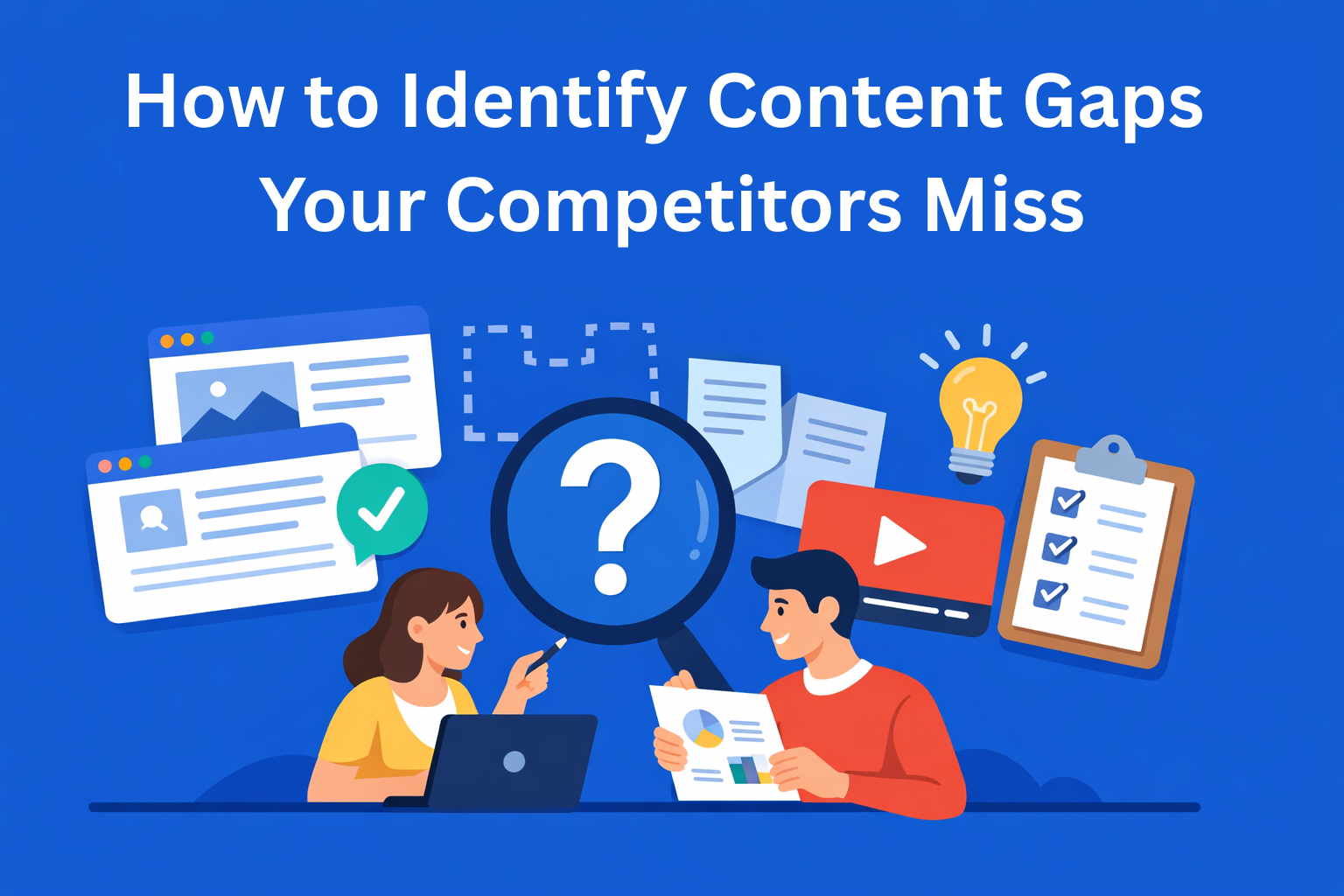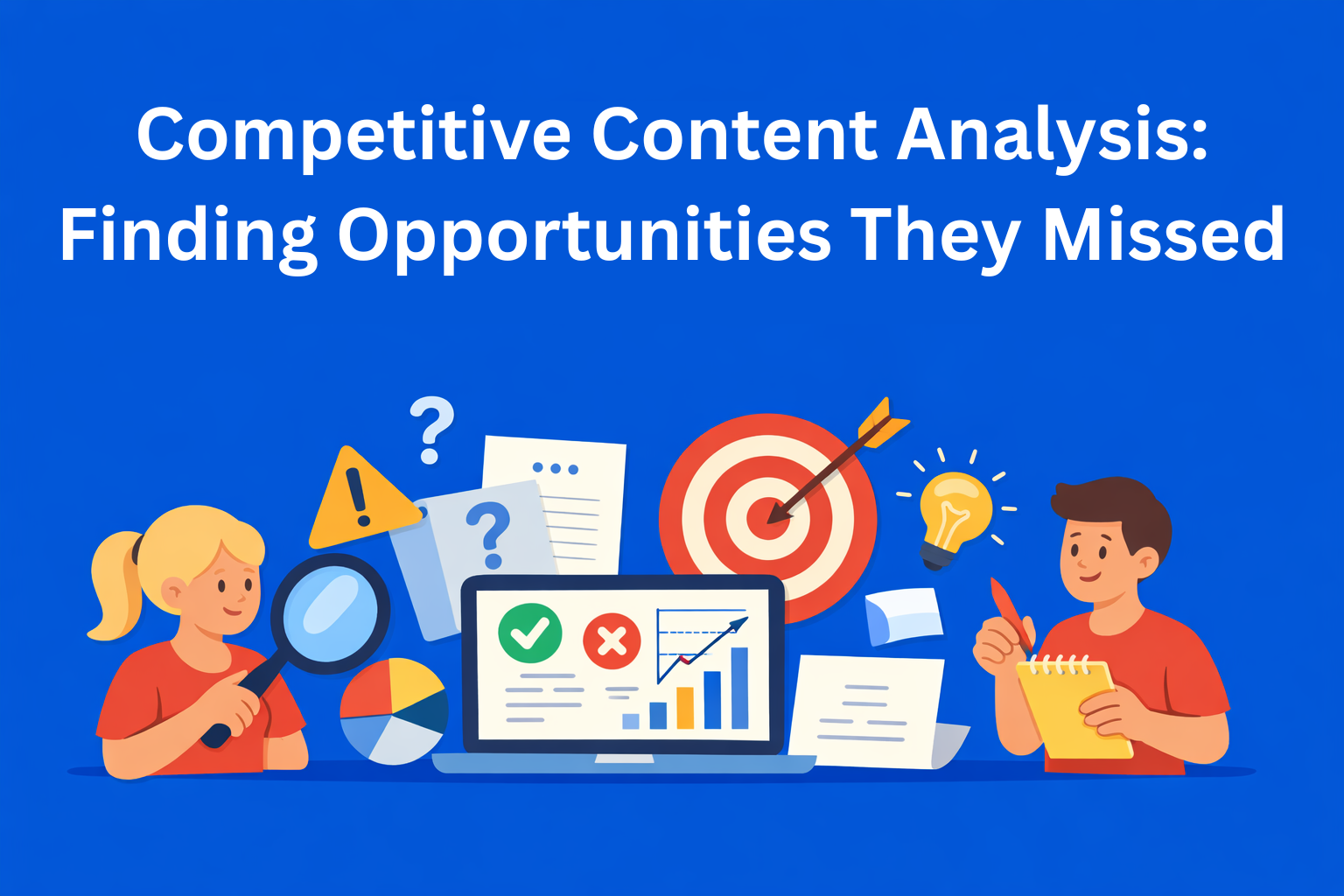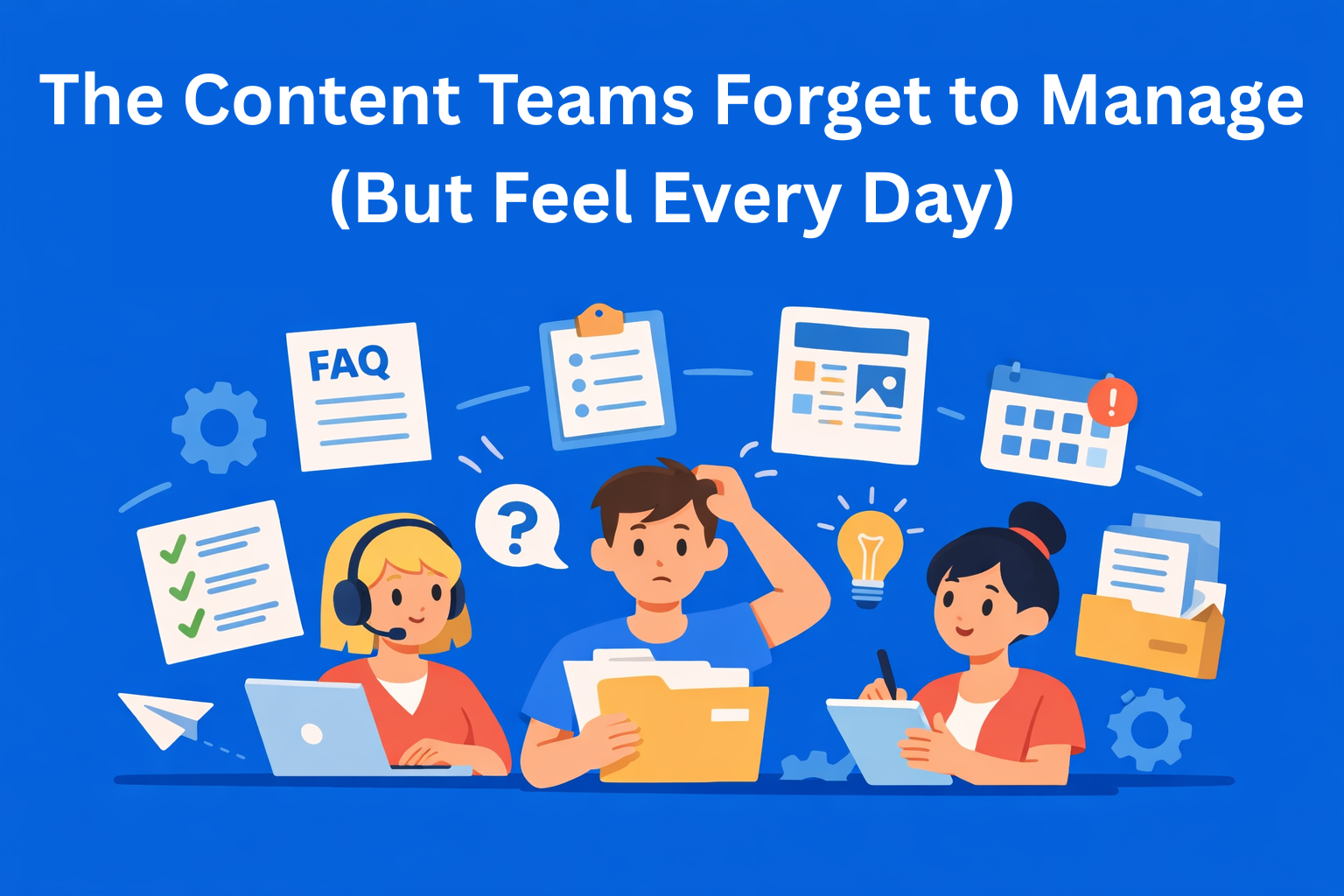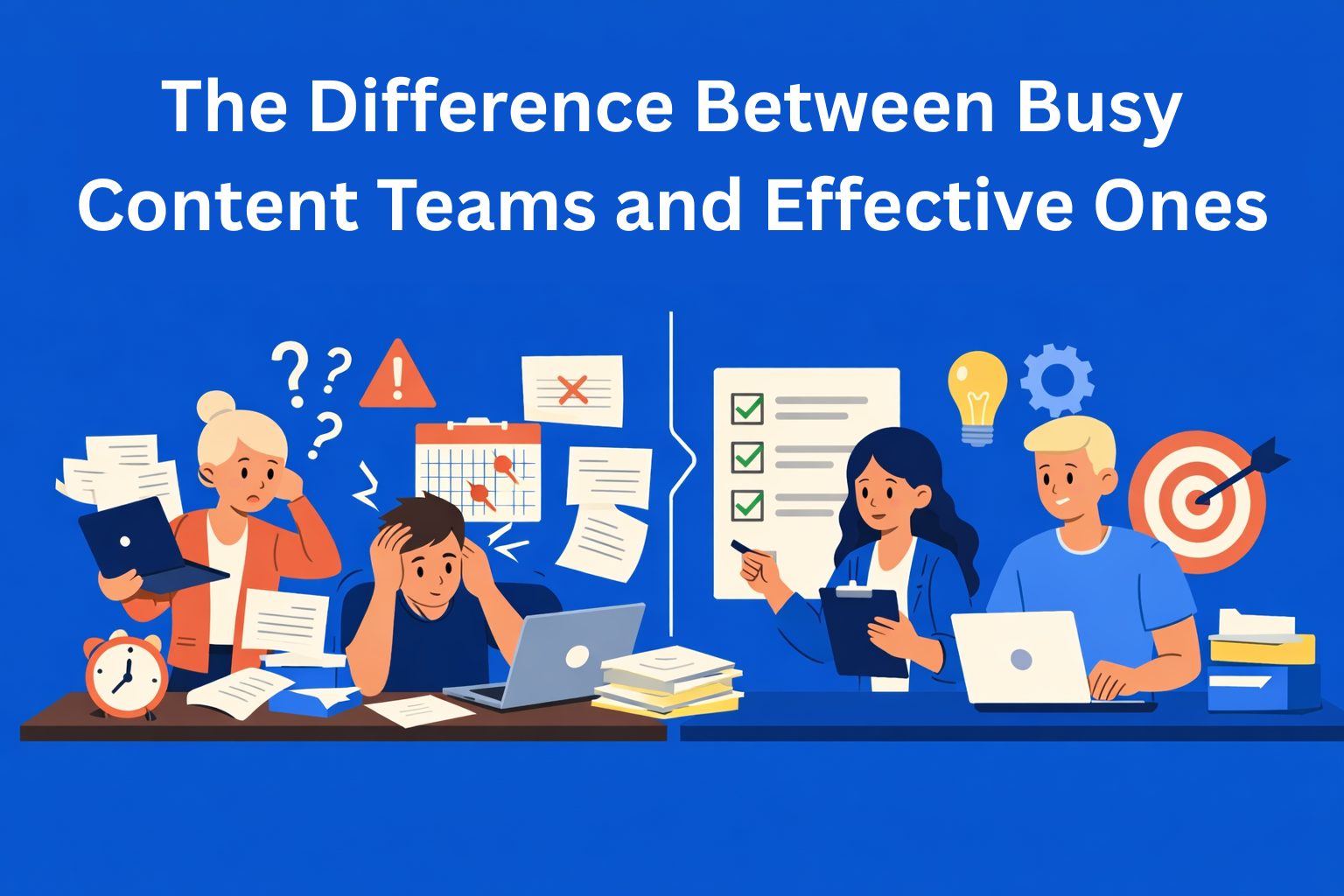AI Levels the Playing Field: Why Small Teams Might Gain More Than Big Ones
AI is transforming how small teams work, helping them move faster, create more, and compete with bigger companies. Discover how AI levels the playing field and gives lean teams the power to operate with the efficiency of much larger ones.
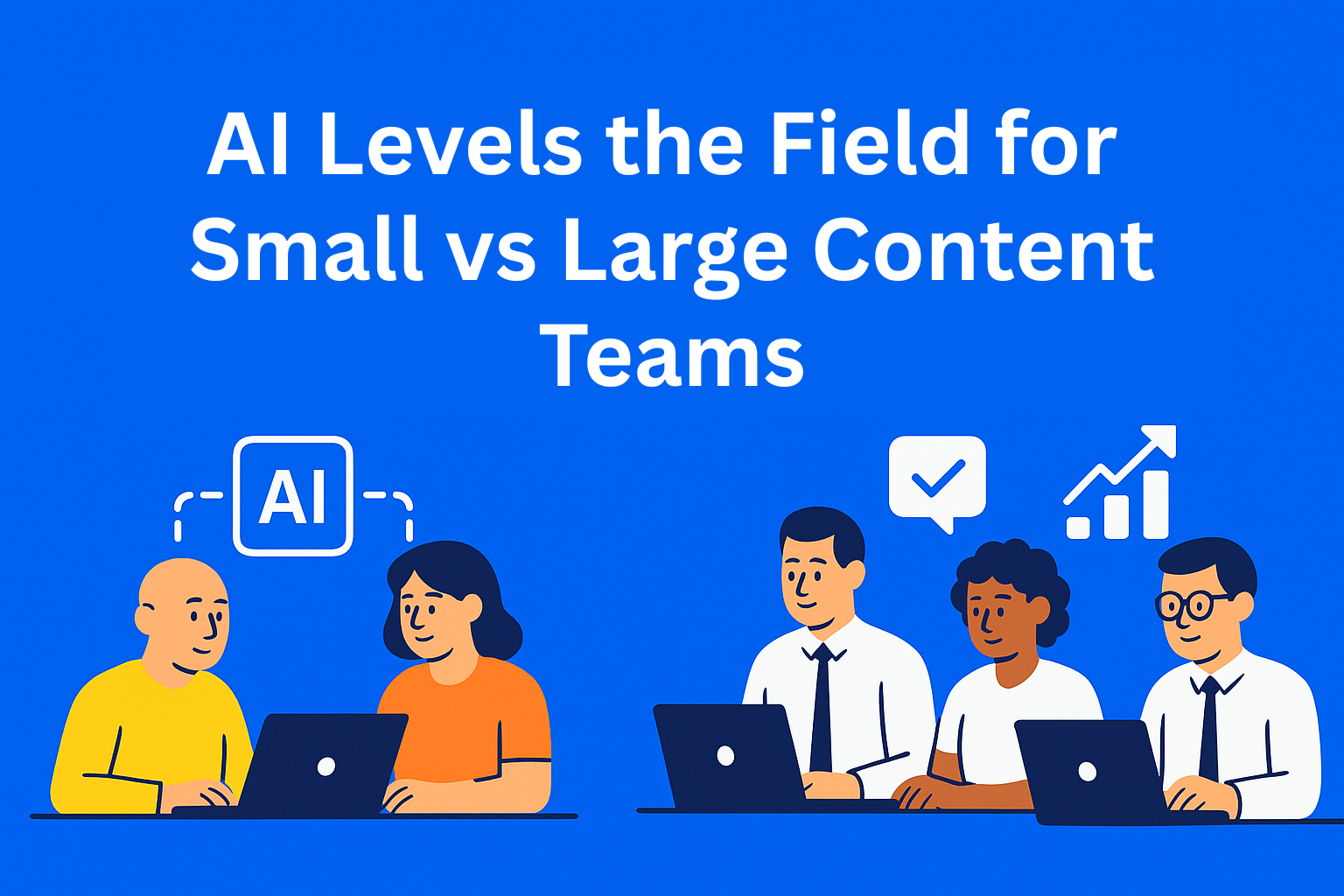
AI today affects almost every part of work, from how we operate to how we create content. Although it often seems that large companies benefit the most, the reality is the opposite. Small teams gain an even bigger advantage because AI allows them to do things they couldn’t do before, work faster, be more efficient, and function like a much larger team.
In the following text, we’ll explain why this happens and how AI levels the playing field between small and large teams in practice.
Key Takeaways
- AI is a bigger advantage for small teams than for large ones - it doesn’t just speed up work, it unlocks possibilities they couldn’t access before.
- Large teams gain efficiency, small teams gain capabilities - enterprises use AI to optimize existing workflows, while small teams use it to cover missing roles and skills.
- AI acts as a force multiplier for small teams - one or two people can now research, create, and analyze content at the level of a much larger team.
- AI closes the resource gap - strategy, research, content creation, and performance analysis become accessible even to teams with small budgets and limited headcount.
- The real edge comes from combining AI with human judgment - let AI handle 80% of the heavy lifting, while people shape brand voice, strategy, and final quality.
A New Era of Content: The Rules Are Changing
It used to be common to think that only large teams could produce a lot of content, research the market, run analyses, and make significant strategic decisions. Now things are changing. AI has introduced a completely new dynamic into the world of content creation and business strategy by helping small teams work much faster and more easily.
Unlike in the past, when a large team was necessary to maintain a serious pace of work, today AI allows even small teams or individuals to do what was once reserved only for big players.
In other words, a team of just a few people can now work like a team of ten, and without major investments.
Large vs. Small Teams: Different Starting Points
To understand why AI helps small teams more, it's important to look at how both types of teams generally operate.
How Large Teams Work
- they have complex processes
- they have multiple approval layers
- they move slower because everyone has a specific role
- they are focused on optimizing the existing system
In other words: AI helps them move faster, but it doesn’t change much about how they work.
How Small Teams Work
- they are adaptable
- they make decisions quickly
- one person usually does multiple jobs
- they introduce new solutions more easily
AI doesn’t just bring speed to small teams, it brings possibilities that didn’t exist before.
That is exactly why AI has a much bigger impact on small teams than on large ones.
AI as a "Force Multiplier"
The term “force multiplier” means something that amplifies the effect of existing resources. For small teams, AI is exactly that.
Before AI, small teams often struggled with a lack of time and people. Now, with the right AI tools, they can produce more content, work faster, analyze better, and compete with much larger teams.
For example, a small team that once managed to create 3 articles per week can now create 10, and with better, more consistent quality.
What Large Teams Gain, and Where AI Doesn’t Change Much
Large teams certainly benefit from AI. It helps them speed up processes, produce more, analyze faster, and manage internal workflows more easily.
But AI does not solve their core structural problems.
Large teams still have many frameworks, rules, and procedures. Even when they adopt AI:
- they have to coordinate
- they go through multiple approval layers
- they follow established workflows that AI can only partially speed up
For small teams, the situation is different, AI completely transforms how they work. However, all these steps that large teams must go through before publishing content can be significantly faster when using tools like EasyContent, where things like approvals, workflow structuring, coordination, and task organization can all be done in one place.
How AI Closes the Resource Gap
Small teams usually have smaller budgets, fewer people, less time, and fewer specialized roles.
With AI, these limitations are no longer major obstacles. AI brings a kind of democratization of skills, skills once available only to large companies are now accessible to everyone.
A small team can now:
- conduct research like large teams
- make data‑driven decisions
- plan strategy quickly
- write and edit content at the level of a professional team
AI literally acts as an extra team member, or several of them.
Situations Where Small Teams Benefit the Most
1. Strategy
AI helps small teams understand the market, audience, competition, and trends by instantly extracting the most important information from large amounts of data. This once required dedicated analysts who manually studied reports, monitored trends, and analyzed audience behavior. Today, AI does this in seconds, allowing teams of two or three people to make decisions like they have an entire analytics department behind them.
2. Content Creation
AI has accelerated every part of the process, from ideas, to drafts, to final versions. Small teams can quickly create articles, video scripts, visuals, and captions, all without needing dedicated specialists.
3. Analysis and Performance Tracking
AI helps clearly identify which content actually performs well and which doesn’t. With tools like Whatagraph, you can analyze views, comments, shares, and audience retention, and based on that see which types of posts have the biggest reach and what resonates with people. Instead of long manual tracking, AI quickly uncovers what the audience likes, how it behaves, and what it reacts to, which allows small teams to adjust their approach and create content that delivers better results.
4. Distribution and Optimization
AI helps adapt content for multiple platforms without extra time, Instagram, TikTok, YouTube, blogs, emails.
All of this means that small teams can accomplish much more in the same amount of time.
How Small‑Team Work Looks Before and After AI
To make things even clearer, let’s compare.
Before AI:
- lack of time
- struggling with deadlines
- low content output
- little room for analysis and strategy
- focus on surviving, not growing
After AI:
- more time thanks to automation
- faster writing and content creation
- detailed analytics available instantly
- clear strategy and more consistent execution
- ability to operate like a “large team”
AI allowed small teams to finally move from a reactive to a proactive mode of work.
How Small Teams Should Start With AI to Get the Most Out of It
1. Start With the Easiest Tasks
You don’t need to automate everything at once. Start with simple things: ideas, titles, short texts, rewriting.
2. Test Multiple Tools
There are many AI tools. Choose the one that fits your workflow best.
3. Combine AI With Human Creativity
AI can help, but tone, style, and authenticity come from people. The best results happen when AI does the preparation and a human does the final shaping.
4. The 80/20 Rule
AI does 80% of the work, you do the remaining 20%. This is usually the most productive and balanced approach.
Conclusion
AI is not just a tool, it is a great equalizer.
For large teams, it brings speed. For small teams, transformation.
That’s why we can say that AI truly levels the playing field, giving small teams the ability to compete side‑by‑side with big companies, even though they have fewer people, smaller budgets, and fewer resources.
In the age of AI, team size is no longer a limitation. What matters is how you use the technology.



